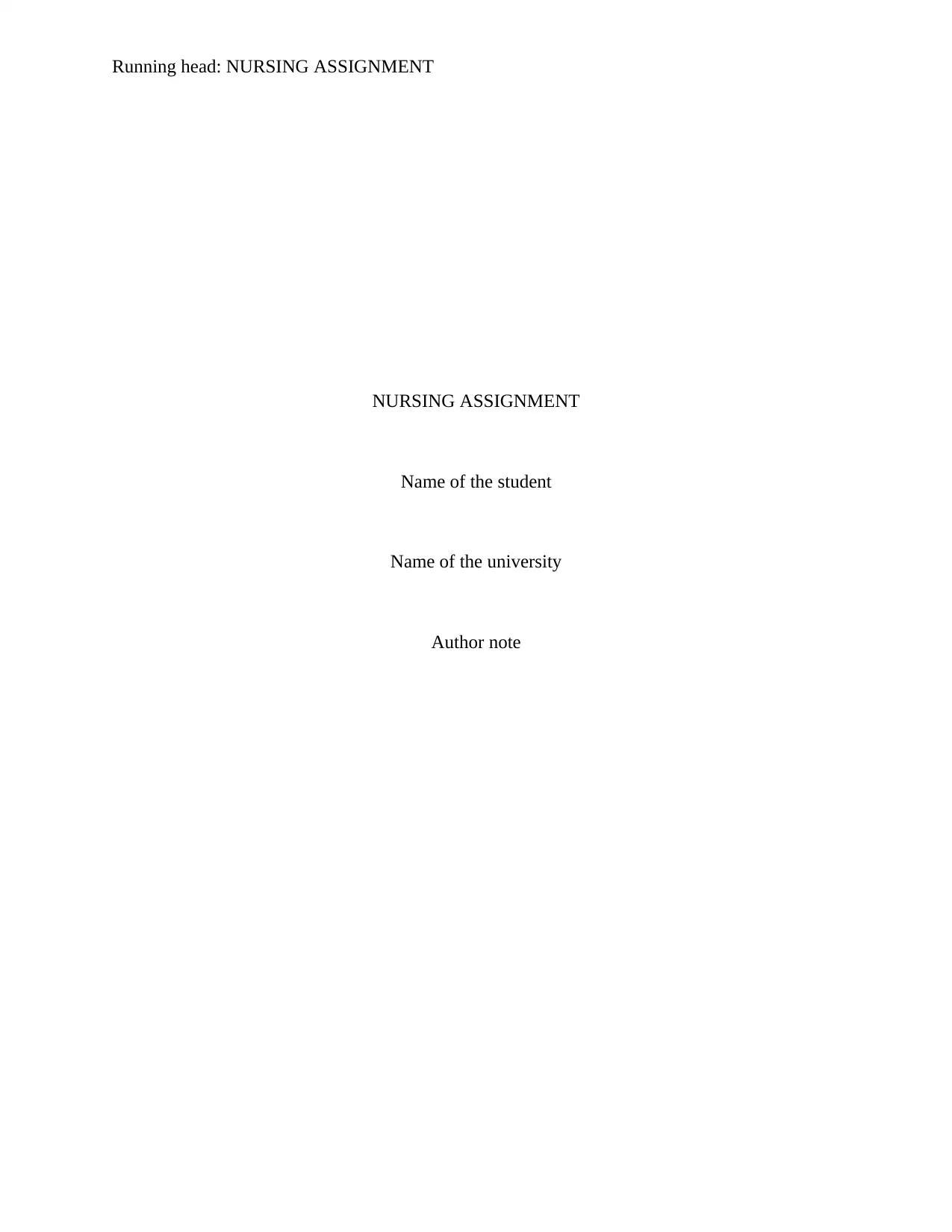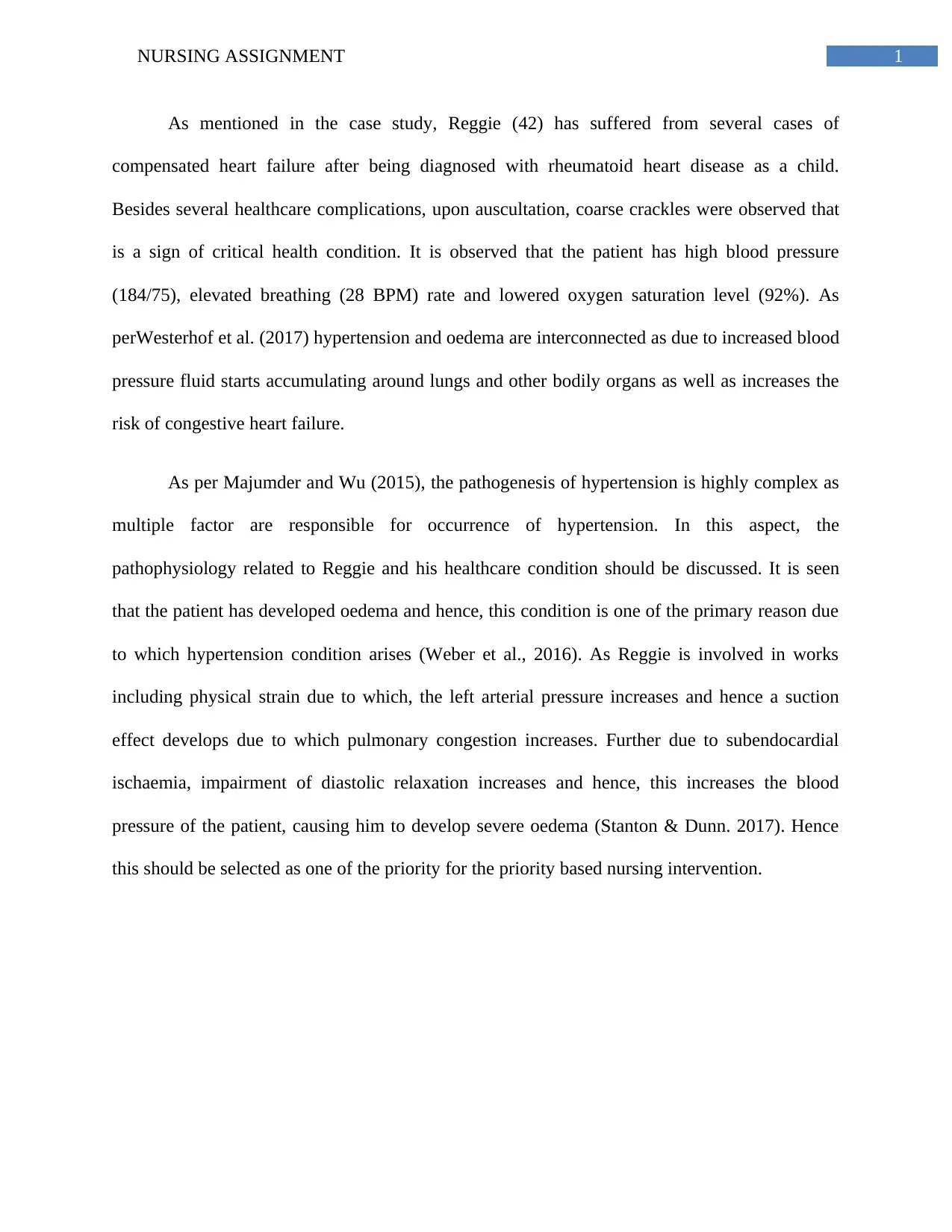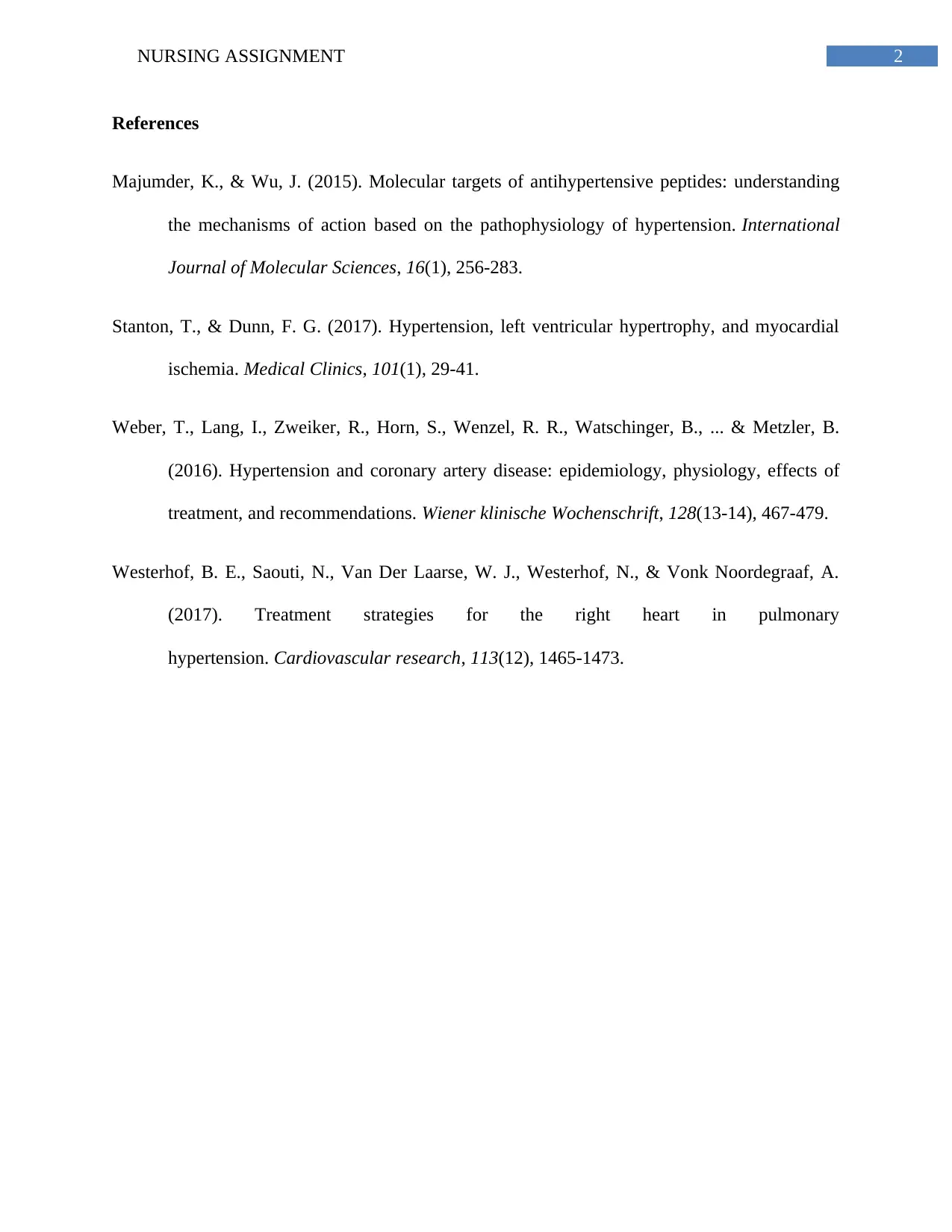Nursing Assignment: Case Study of Patient with Heart Failure
VerifiedAdded on 2022/12/30
|3
|497
|59
Report
AI Summary
This nursing assignment report presents a detailed analysis of a case study involving a 42-year-old patient, Reggie, diagnosed with compensated heart failure due to rheumatoid heart disease. The report examines the patient's symptoms, including high blood pressure, elevated breathing rate, and lowered oxygen saturation levels. It explores the pathophysiology of hypertension and oedema, highlighting the interconnection between these conditions. The assignment references key research articles to support its findings and discusses the role of subendocardial ischaemia and diastolic relaxation impairment in increasing blood pressure. The report emphasizes the importance of prioritizing nursing interventions based on the patient's specific health condition.
1 out of 3










![[object Object]](/_next/static/media/star-bottom.7253800d.svg)